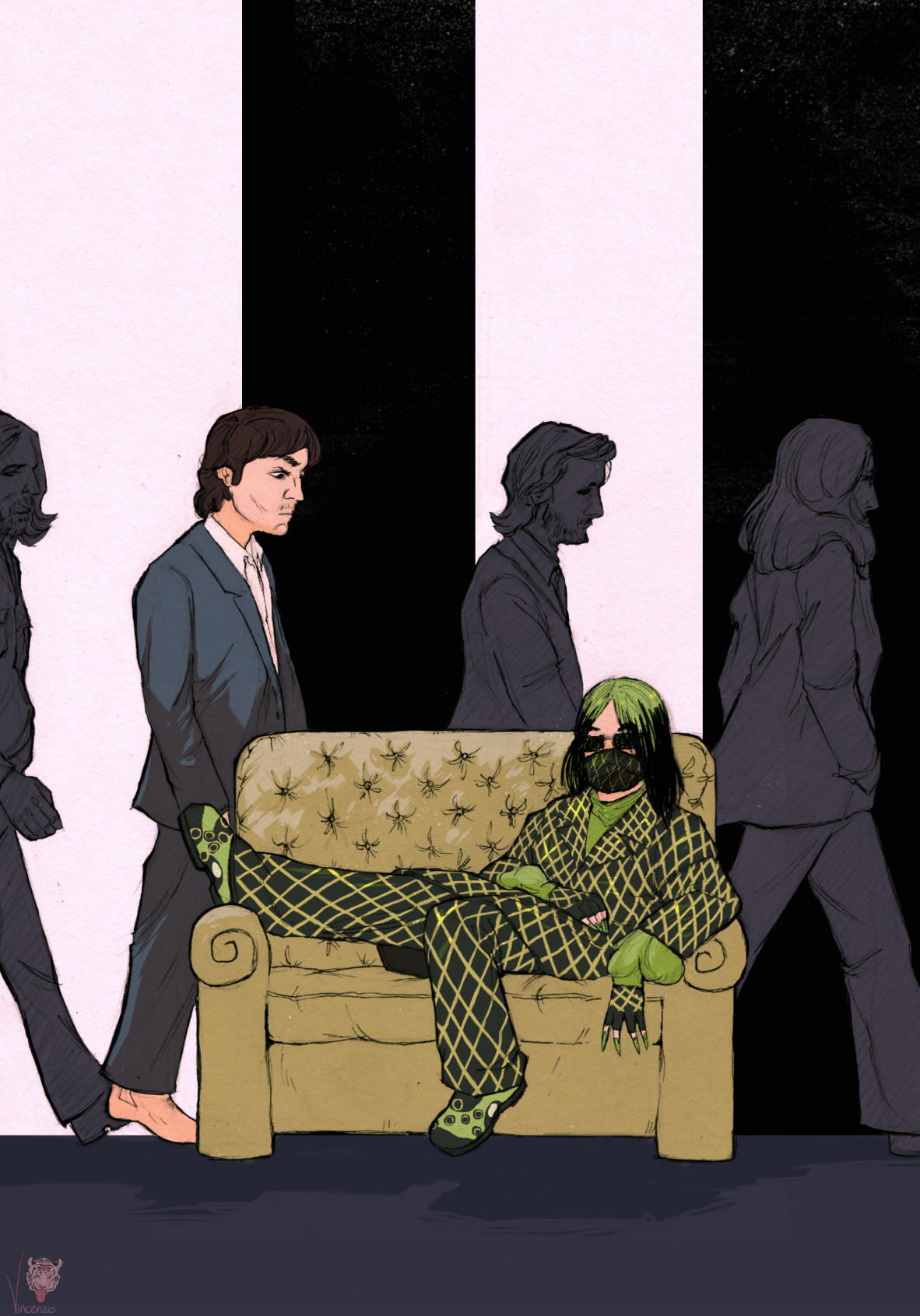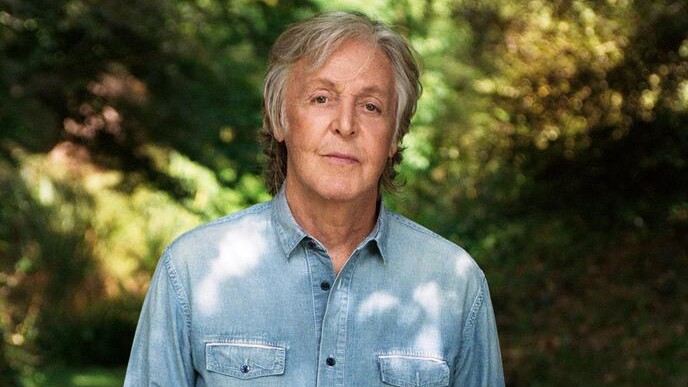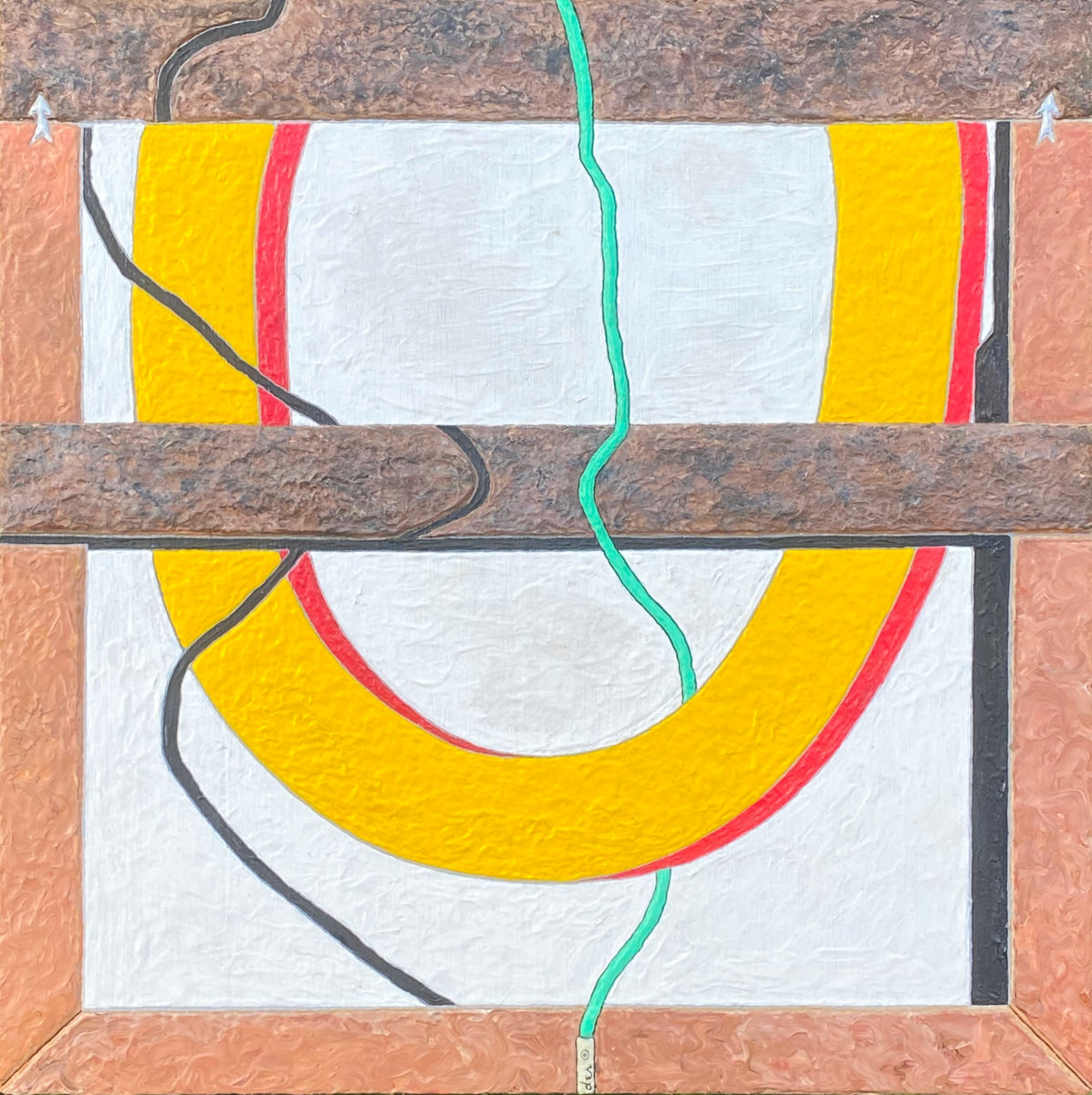Tame Impala: The Story So Far
Words by Riley Fitzgerald
Graphic by Garreth Pearse
Tame Impala’s Kevin Parker was born in Sydney in 1986. His father Jerry was from Zimbabwe, his mother Rosalind from South Africa. The family moved not long after Kevin’s birth. Jerry’s occupation as Chief Financial Officer at mining company Gold Fields demanded his new family relocate to one of the most isolated areas of Australia. Kevin spent his early childhood in the remote Western Australian township of Kalgoorlie.
When Jerry wasn’t preoccupied with his corporate gig, he indulged a passion for music. He was always playing guitar around the house and moonlighted in covers bands, the kind you might catch playing Beach Boys, the Beatles, Supertramp or surf instrumentals by The Shadows. Rosalind was a free spirit. She liked hiking and the outdoors.
When Kevin was three Rosalind and Jerry separated. Both halves of the family moved to Perth, Kevin went to live with Rosalind and a new stepfamily in the suburb of Mount Lawley. Jerry moved to the beachside suburb of beachside Cottesloe some 15 kilometres away.
The early years of Kevin’s life were filled with drama. He would later refer to them as “a soap opera.” He became closed off. It was his survival mechanism.
Perth was a naturally beautiful city, but conservative. Far removed from other Australian capitals, its insularity shaped Kevin. Within him, it fostered a unique sense of creativity.
Inspired by Michael Jackson, Kevin began writing songs at age 7. He also toyed with a jumble of instruments strewn around Jerry’s house when he was spending time there. Drums were his first passion. Sitting behind a kit at 11, he felt an instant sense of identity and purpose.
Jerry’s band practiced regularly in a soundproofed garage. It was here that Kevin began recording music at age 12. Happening upon a pair of his father’s two-track tape recorders, he became obsessed. He didn’t yet have the technical words to describe it, but he began multitracking layers of instrumental sound, creating his own backing tracks and experimenting with other rudiments of sound production.
When Kevin’s drumming had to stop on account of Rosalind moving to a new house, Jerry taught him guitar. Just a few chords so he could play along with the old man on rhythm. After discovering guitar tablatures on the internet, Kevin moved away from his father’s tuition. He began teaching himself, constructing and deconstructing the parts of his favourite songs. He also came into the possession of a Casio keyboard.
As with many children from broken families, Kevin had a driving desire to act out. Music was an outlet, but it didn’t fill him entirely. A burning need for expression manifested in other ways. Vandalism, shoplifting and graffiti became regular hobbies.
Once, after a failed attempt to steal wallets from a local surf store brought him into conflict with the law, Kevin’s parents were greeted by the sight of their son returning home in a police car. The delinquency continued. A year after his first brush with the law, his stepmother uncovered a bag of pot in the now 13-year-old Kevin’s room. (He’d been flirting with the drug since 11.) Alongside a bong, spray cans, and empty beer bottles his parents also found goods lifted from a local hardware store.
It was the last straw. Jerry put his foot down, and hard. The way Jerry and Kevin’s stepmother saw things, it was the company their son had been keeping at school which was really to blame. They forbade him from hanging out with his friends. Kevin didn’t feel that it was his friends that were all that bad though. It was him.
Shy and underconfident, Kevin remained isolated for the rest of school. There was one exception though, Dom Simper. Dom was the only other kid who played guitar. Set apart even from their other peers, Parker and Simper shared an affinity for music bordering on obsession. Every day Kevin would share a new song he had written with Dom. In return, his musical foil would give him an opinion. Often it was brutally honest.
When Kevin was 15 his parents set aside their differences and gave their marriage another shot. After a decade apart Kevin’s family moved back in together. It didn’t work, it fell apart within a month.
Attempting to escape the fallout Kevin moved into a primitive granny flat behind his mother’s house. Kevin and Rosalind soon had a falling out. He moved back in with Jerry.
Kevin had a band at school. They would jam to covers at music events. The time between these shows he spent dreaming.
Kevin left home as soon as he could. For a while, he worked as a law clerk. The job required him to deliver documents, but he spent most of the time writing songs in his head.
Kevin enrolled in university but had little interest in what higher education had to offer. Aware of his son’s indifference, Jerry insisted he apply himself. Kevin needed something more secure than a career in music. Seeing there was little reason in arguing the point Kevin dabbled, at first studying engineering and then astronomy.
Nothing took. Kevin was failing miserably. He couldn’t concentrate. All he was thinking about music.
Kevin was washing out, but he had never been happier. He was making friends. They were a small group, but after so much time alone it felt like he belonged. While he was studying, he moved into a rundown duplex with his friends on Troy Terrace.
Nestled within the Perth suburb of Daglish, Kevin incubated. Life was slow. He passed the time drinking, smoking pot and heading to the nearby beach. He and his housemates rarely had steady girlfriends, mostly they kept to their own company.
When Perth came alive on weekends, they descended upon the pubs of Northbridge and Subiaco. Kevin was still at university but barely attended. He was more inclined to spending time on the porch wondering what day it was.
Many at Troy Terrace shared a similar musical fixation. It led to the formation and dissolution of a succession of bands. Kevin typically played in several projects at once. In 2005 he started a group called The Dee Dee Dums with Dom and another friend Luke Epstein.
There were no record label executives in Perth. At least not at Kevin’s shows. He and his friends could climb on stage and do whatever it was they wanted. The only people they had to please were themselves and maybe a few stray fans. They could try new things with little risk of embarrassment. Their music grew organically. When they weren’t at gigs, they were jamming.
Jodie Reagan was part of the scene. She worked at a local Freemantle pub, The Norfolk. She booked and managed bands on the side. After returning to Perth from a few years abroad she glimpsed a group called the Electric Blue Acid Dogs at a local music venue called Mojos.
It was open mic night, Monday. The band played like crazy. A wild 17-year-old yelled out vocals. It was Nick Allbrook. He left an impression on Jodie. She came back to see him again and, convinced they had something special, approached them with a proposition. She wanted to manage them. Seeing that she was already working with a modestly successful outfit The Kill Devil Hills the band agreed.
The Acid Dogs lost a member. Guitarist Shiny Joe Ryan’s visa had expired, and he needed to return to Ireland. With Joe out of the picture, Kevin was happy to fill in. (Nick had previously become familiar with Kevin when the Acid Dogs played off against The Dee Dee Dums at a local Battle of the Bands competition).
Shiny Joe later returned but the band decided to keep Kevin too. When the group’s drummer then left to pursue a career in acting, Kevin took over on percussion. By now this loose collection of creative souls were calling themselves Mink Mussel Creek.
Kevin still had The Dee Dee Dums, which Jodie began managing as well. As things progressed, the Dums began to take priority over Kevin’s other bands. He was spending more and more time in his home studio working on his own recordings. He was onto something.
On the verge of fame, Kevin changed his project’s name to Tame Impala. Why? He was thinking something that sounded psychedelic. An Impala was also an African animal as well, it paid homage to his parents’ heritage.
One day Kevin was driving to an astronomy exam. His phone rang. It was a record label, Modular. Some recordings he’d posted online had caught their attention. Would he consider putting something out with them? He turned the car around then and there. He never made it to that exam.
Another bandmember named Jay Watson came into the fold in 2007. He had played alongside Kevin’s groups at a number of concerts in his own hometown of Northam. Nick Allbrook also signed on the following year. (In turn, Kevin briefly joined Nick’s band POND.)
Kevin begun work on recording his first album. However, Jerry would never live to see its completion, passing away after a year-long struggle with cancer in 2009. Kevin was devastated. LSD and other indulgences helped him by. He also became closer to his mother. The corners of his mind drifted into self-questioning, self-discovery and spirituality. These thoughts bled into his music.
Modular put pressure on Tame Impala to work with a producer, but Kevin refused. He wanted to record himself. He’d been doing it since he was 12.
2010’s InnerSpeaker reinvented Kevin’s viral singles and two home-recorded extended players into a powerful statement of identity. In a shed-like beach house four hours to the south of Perth, Kevin and Dom created an ad hoc recording studio. For eight weeks they worked as others dropped in and out. Recording was near-ceaseless. What would become the album’s seventh song, ‘Jeremy’s Storm’ was captured during a vicious downpour, water was leaking through the roof.
InnerSpeaker was an indie hit. With the release of the album, Tame Impala quickly earned critical praise at home in Australia and overseas. In a bid to escape from the commotion while broadening his horizons, Kevin decamped to Paris.
Kevin lived in France for a year. In this time, he had a short-lived romance with Melody Prochet (and recorded album Melody’s Echo Chamber with her). He also recruited a new member of Tame Impala, Julien Barbagallo.
After coming of age within the close community of Perth, Kevin was now anonymous. Nobody knew his name. Nobody knew what he was saying. Nobody was asking for him anything, nobody expected anything from him. Nobody was telling him what to do.
This dense and bustling metropolis was an opposite of his isolated home city. Kevin found Parisians uptight and self-obsessed relative to the egoless and casual climate of Perth. But he enjoyed the contrast. Freedom! He was living a fantasy.
This dislocation gave birth to a second record. Lonerism reconciled Kevin’s current sense of isolation with a childhood spent trying to connect. He began experimenting, casting aside InnerSpeaker’s illusion of a band playing together live. Instead, he wove impossible combinations of vocals and instrumental sounds.
Lonerism cost less to create than InnerSpeaker. Kevin produced the record mostly using his own gear in his bedroom, toying with Ableton and vintage synthesisers. As he experimented, genre classifications and points of comparison fell away. The record exemplified Parker’s perfectionism and technical finesse. Heavily emotional lyrics came on brighter and more direct than ever before.
Lonerism was a gateway. It opened doors personally, musically and professionally. After its release in 2012, Kevin’s second record led him into a new world and a new personal outlook. As he did a growing and ecstatic fanbase followed. Lonerism won Grammy. It was a platinum album.
Upon returning to Perth Kevin purchased a beachside shack with help from the proceeds of Lonerism single ‘Elephant’. Here he built his own studio, just down the road from home. There were tensions with label Modular. They were struggling to cope with the scope of the band’s success.
Kevin’s ambitions too were becoming great. Tame Impala’s focus became international. Tame were in demand, fixtures on US and European festival circuits. In 2013 Nick Allbrook left to work on his own projects and Cam Avery, one of Nick’s frequent collaborators, took his place.
Kevin was also reconnecting with his past. Back in Perth he became reacquainted with Sophie Lawrence, an advertising executive and former high school crush. He began accepting he could just be himself. He was experiencing life inside of worlds he never thought he would belong to.
He began work on his next album. Titled Currents, Kevin envisioned his third record as something different. This was going to be a pop album, one with a central narrative coming from the idea of telling the story of the end of a relationship but from the perspective of the person who wanted out.
‘Let It Happen’ is the moment of realisation that strikes the album’s transcendent tone, resolving many of the confusions of Lonerism through embracing change. It celebrates growth. It represents Tame Impala’s journey from indie to pop. As success found its way into his life, Parker’s terminal introversion became something he strove to overcome.
The stratospheric success of Currents reaffirmed Lonerism was no fluke. Parker’s work found increasing currency with Hollywood aristocracy. He began frequenting LA studio sessions, collaborating with Kanye West, Travis Scott, Kali Ulchis, Lady Gaga, Mark Ronson, and Zhu. Rihanna covered ‘New Person Same Old Mistakes’.
On February 9th, 2019 Kevin and Sophie, now his girlfriend of five years, tied the knot in a secret ceremony in a Western Australia vineyard. Some big names were invited but it was mostly friends and family. After which it is reported the couple ordered 150 McDonald’s cheeseburgers for a reception which lasted until dawn.
If Tame Impala’s first three albums can be formed into a narrative arc, it is a journey toward trusting your own intuition, finding yourself and seizing the moment. As Kevin had come to realised, it was now or never. Not content to rest upon his laurels he has set about working on a new record.
By early accounts, Kevin was expecting Tame Impala’s fourth album to come easy. He was even been bold to suggest a mid-2019 release. Fan anticipation rode high when two singles ‘Borderline’ and ‘Patience’ were released in the early half of the year but little followed.
As weeks turned into months, it became less and less clear if these singles would be part of a greater work. Then, on October 23, 2019 a mysterious video appeared on the Tame Impala website. Two days later came another informing its viewers that what fans had long dubbed ‘LP 4’ finally had a name: The Slow Rush.
A day later Tame Impala shared the album’s cover art and let drop that after a five year wait since Currents, The Slow Rush would arrive 2020. Four days later came leading single, ‘It Might Be Time’.











